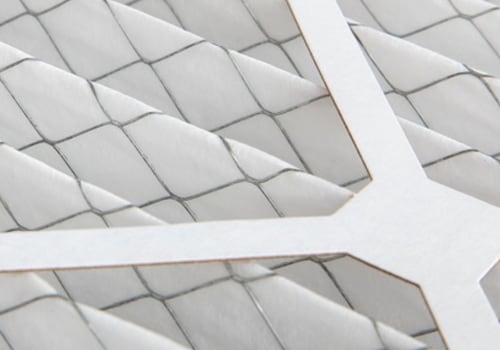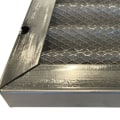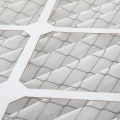A Simple Guide on How to Measure the Correct Size for Your HVAC Furnace Air Filter
Ready to find out your HVAC furnace air filter size? Grab that trusty tape measure of yours.
First, carefully take out your current filter from its position, with your tape measure, record length, width, and thickness. To ensure accuracy, double-check each dimension. Remember, manufacturers tend to round up filter sizes.
Correct filter size guarantees top-notch HVAC performance along with cleaner air indoors. Further investigation can help you learn about filter types and their efficiency ratings.
Main Points to Remember
Begin by gently extracting the current filter from your furnace.
Employ a trusty measuring tape to evaluate the filter's length, width, and depth.
Ensure to pen down your measurements, double-checking each side for precision.
Opt for the larger size if your measurements show slight differences since filter sizes are generally rounded up by manufacturers.
Determine the type of your filter, so you can find a suitable replacement. Special orders may be required for custom-sized filters.
Understanding HVAC Furnace Air Filters
HVAC furnace air filter, along with its vital role in your system, is essential. This important component traps harmful airborne particulates, such as dust, pollen, or pet dander, that could potentially damage your furnace.
Different types of filters exist, each with specific efficiency ratings and lifespans. Pleated air filters, for example, catch more particulates than fiberglass counterparts but typically come with higher costs.
Just installing a filter isn't enough. For smooth running of your system, regular inspections and cleaning or replacing of filters is necessary. Neglected filters can become dirty or clogged, restricting airflow. This makes your furnace work harder, possibly leading to increased energy costs or even system damage.
In essence, knowledge of your HVAC furnace air filter contributes to a well-maintained, efficient system. Let's further discuss the importance of getting the filter size right in the next section.
Importance of Correct Filter Size
Ensuring your furnace air filter fits correctly is key for optimal HVAC system performance. Filters of the wrong size don't fit as they should, resulting in your system working excessively. Such inefficiency contributes to a spike in energy consumption and subsequently, a rise in your energy bills.
Filter size significantly impacts its effectiveness. Filters fitting correctly capture particles more efficiently, leading to cleaner indoor air. On the other hand, poorly fitted filters don't purify air to the same extent, allowing more dust, allergens, and pollutants to linger in your living space.
Cost considerations are worth noting as well. Inefficient, ill-fitting filters need frequent replacement, driving up maintenance costs and demanding more of your time. Moreover, if your furnace works overtime due to incorrect filter size, premature wear could occur, resulting in expensive repairs or even necessitating a complete system replacement.
Tools Needed for Measurement
To measure your furnace air filter accurately, gather these essential tools: a versatile, accurate standard tape measure for main measurements, a pen, and paper for jotting down dimensions, and consider using a flat table or counter for laying out the filter.
Maintaining your tools, especially your tape measure, in top-notch condition ensures clear markings for precise readings. After use, clean tools and store them properly to prolong their usability and guarantee precise measurements later on.
Knowing how to measure is also vital. Familiarize yourself with reading a tape measure accurately, including discerning between inches and centimeters. Know how to measure dimensions such as length, width, and depth precisely.
Step-by-Step Measurement Guide
Armed with the necessary tools, let's look into how to accurately measure your HVAC furnace air filter size. Begin by gently extracting the current filter from its designated slot. Avoid using force to prevent potential damage to your HVAC system.
Following removal, assess its length, width, and thickness using a tape measure. Jot down each dimension to steer clear of confusion later on.
Let's discuss filter types next. Your filter could be a flat panel one, typically an inch thick, or a pleated version which can be as thick as five inches. Identifying your filter type assists in selecting a suitable replacement.
Custom or unusually sized filters can complicate measurement. In such scenarios, either ordering a special size or adjusting the filter slot might be necessary. Correct sizing is important since improper fit can compromise filtration efficiency and potentially harm your HVAC system.
Tips for Accurate Measurements
Ensuring you have the correct measurements can prevent the inconvenience of buying an unsuitable filter size. This attention to detail is important to sidestep measurement difficulties, considering the vast assortment of filter types available.
Accurate measurements involve considering all three dimensions: length, width, and thickness. Utilize a dependable ruler or tape measure, taking care to measure every side twice for uniformity. Should differing results arise, opt for the larger number. A slightly larger filter that can be modified to fit is more suitable than one that's too small.
Remember that manufacturers often round up filter sizes. For example, a filter measuring 19.5 inches may be marketed as a 20-inch filter. Don't worry if your measurements aren't an exact match with product labels.
Furthermore, filter size doesn't inherently determine its quality. A larger filter doesn't necessarily purify your air more effectively, but a superior filter will. Concentrate on finding a filter that's compatible with your system and satisfies your air quality requirements.
With these guiding principles, you're now prepared to ascertain the measurements of your HVAC furnace air filter accurately and confidently.
Frequently Asked Questions
What Types of Air Filters Are Best for People With Allergies?
People dealing with allergies require air filters capable of capturing particles that trigger allergies. Filters with high efficiency serve best for this purpose. Material choice in filters also holds significant importance in reducing allergens.
How Often Should You Replace Your HVAC Furnace Air Filter?
Consider changing your HVAC furnace air filter every quarter of the year, approximately every 90 days. However, this timeframe is not fixed and may be affected by seasonal shifts. If allergies plague you, frequent filter changes could improve air quality.
Can I Clean and Reuse My HVAC Furnace Air Filter?
Yes, certain HVAC furnace air filters can be cleaned for reuse, bearing in mind their lifespan. Traditional cleaning methods might prolong their functionality, yet won't eliminate the essential need for replacement eventually.
What Is the Cost Difference Between Various Sizes and Types of Filters?
Filter costs change depending on their dimensions and category. Usually, superior, larger filters come with a higher price tag, yet provide superior energy efficiency. Balancing initial expenditure with potential energy savings becomes important.
What Are the Effects of Using a Wrong-Sized Filter on HVAC Efficiency?
Using an incorrect filter size will lower your HVAC’s operational efficiency. This misuse may lead to a shorter lifespan for your filter, putting unnecessary strain on your system. Potential damage could follow, resulting in expensive energy bills. For peak performance, always prioritize ensuring the filter's proper size.
Here is the nearest branch location serving the Parkland area…
Filterbuy HVAC Solutions
2521 NE 4th Ave, Pompano Beach, FL 33064
(754) 484-4453
https://maps.app.goo.gl/rkm71FuFCrA2coub7
Here are driving directions to the nearest branch location serving Parkland…











